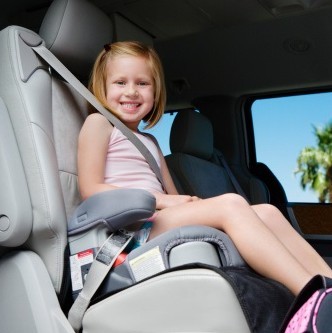Has your child’s booster seat been inspected?

Parents should get booster seats checked for safety the same way they get car seats inspected because booster seat aged children are two times more likely to suffer injuries or death during a car crash compared to younger children according to a new study.
Child passenger safety inspections generally focus on infant and toddler car seats, according to the study. Researchers also found similar attention needs to be paid to booster seats.
“Booster seats seem less technical and complicated than installing an infant seat, which may lead parents and families to worry less about using them incorrectly,” senior study author Michelle L. Macy, of the University of Michigan, said in a news release. “We know that older kids are at particular risk of injury from a car crash. Our study suggests it may be beneficial for certified child passenger safety technicians to focus more on providing education and guidance on prolonged use of booster seats.”
Just 25 percent of booster seats are inspected at car seat inspection stations in Michigan according to an analysis by University of Michigan Health System. Instead, inspections generally focus on infant and toddler car seats, according to a recent study.
“We know that older kids are at particular risk of injury from a car crash. Our study suggests it may be beneficial for certified child passenger safety technicians to focus more on providing education and guidance on prolonged use of booster seats,” said Macy.
At Advocate Condell Medical Center in Libertyville, Ill., Lynn Allison conducts free child passenger seat safety inspections. She says parents and other caregivers need to realize the importance of these inspections.
“That’s precious cargo in those seats,” says Allison, director of Advocate Condell’s Child Day Center. “Keeping children safe needs to be a priority.”
Whether checking car seats or booster seats, inspections take about 20 minutes. For booster seats, Allison first checks if the child is within the manufacturer’s recommended weight and height ranges.
“There’s no magic age,” Allison says, noting that, on average, a child should weigh more than 40 pounds before graduating from a car seat into a booster seat. And, before graduating from a booster seat to seat belt only, a child should be at least 4-feet, 9-inches tall and weigh at least 80 pounds.
The booster seat check list also includes:
- Is the child using an after-market belt positioner?
- Does the lap/shoulder belt fit the child properly?
- Is the safety belt routed correctly?
- Does the seat meet federal expiration requirements?
- Was the seat involved in a car crash?
The study suggested that many parents transition their children from booster seats to seat belts before it is safe to do so. For a seat belt to fit properly, the lap belt must lie snugly across the upper thighs, not the stomach. The shoulder belt should lie snugly across the shoulder and chest and not cross the neck or face.
If the switch to a seatbelt is made too soon and the child gets in a car accident they can suffer from “seat belt syndrome,” which can cause intra-abdominal, spinal cord and facial injuries to the child.
Related Posts
Comments
About the Author
Kathleen Troher, health enews contributor, is manager of public affairs and marketing at Advocate Good Sheperd Hospital in Barrington. She has more than 20 years of journalism experience, with her primary focus in the newspaper and magazine industry. Kathleen graduated from Columbia College in Chicago, earning her degree in journalism with an emphasis on science writing and broadcasting. She loves to travel with her husband, Ross. They share their home with a sweet Samoyed named Maggie.

















